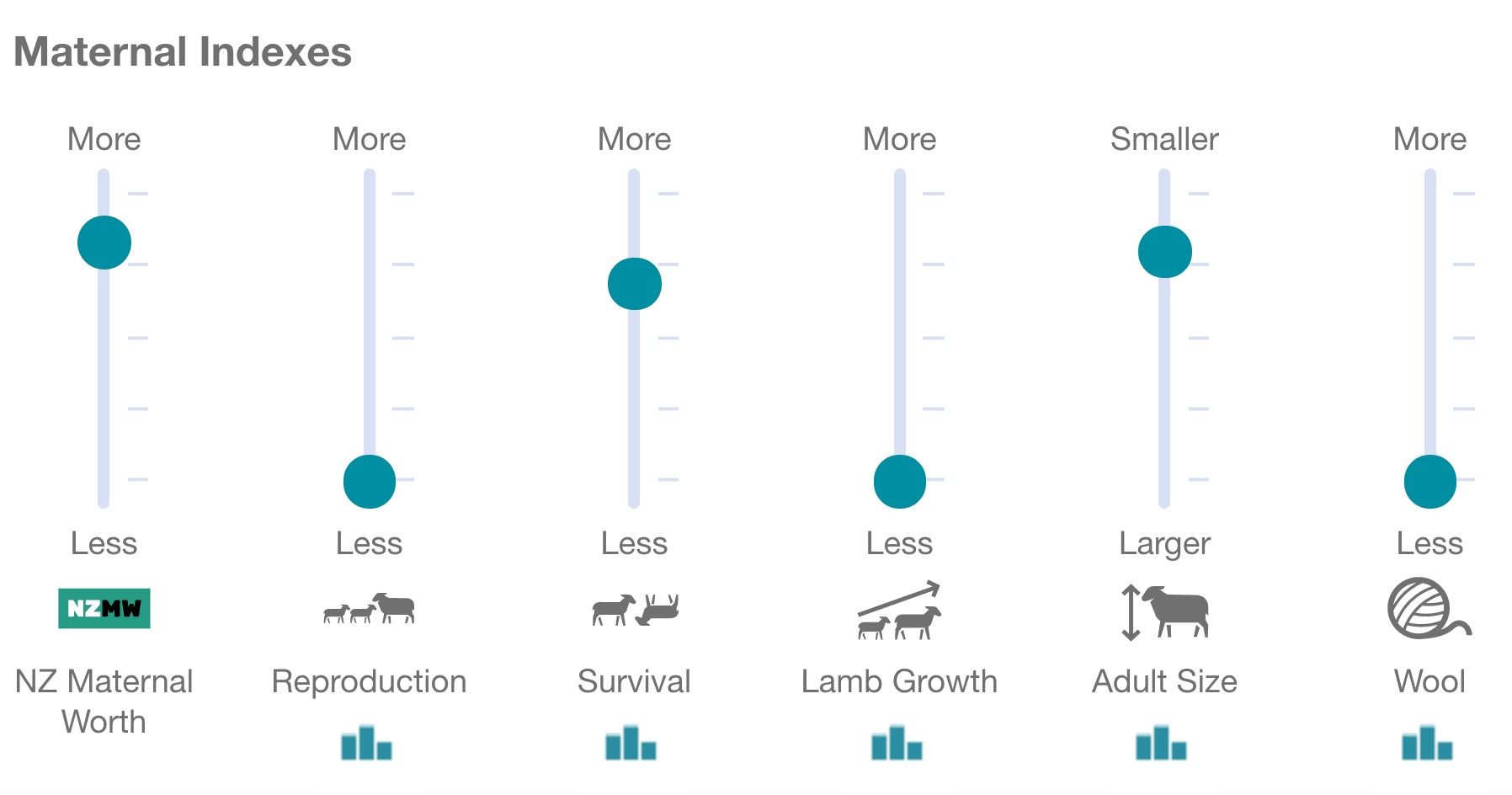BY: BEN ALLOTT
Before you start flicking through stud catalogues or booking a ferry crossing for a buying trip, I strongly recommend you take the time to review the performance of your breeding operation. Identify the strengths and weaknesses of your sheep genetics, set some medium term goals and use the tools available to you to research studs that are breeding rams that complement your vision. Create a genetic plan.
Your terminal ram is not an afterthought. Selection should be as careful and considered as for a maternal ram. The lambs born from terminal sires should be the economic powerhouse of your breeding operation. These lambs need to have high survival and they should have rapid growth rates and excellent meat traits to maximise your lamb kill off mum. Those that don’t go fat should be excellent finishers and be aggressively sought after in the trade lamb market. Hybrid vigour is a great asset to the offspring of terminal sires but it should not be the sole feature of your terminal selection programme.
The NZ terminal worth index is a good place to start in assessing the genetic merit of terminal sires. Three traits – lamb survival, growth, and meat yield – feed into this single index figure, which can be used to directly compare rams on their ability to deliver your farm a quality, high performing terminal lamb.
MATERNAL SIRES
Beef + Lamb NZ Genetics ‘Better sheep breeding’ is a resource to help you develop a genetic plan, improve your understanding of breeding values and indexes, and to provide assistance in finding ram studs that align better with your genetic goals. A new tool this resource doesn’t mention is nProve.nz. This free online search engine is designed to help you easily find such rams and studs. When you load the page for the first time it steps you through how to use the tool with a walkthrough tutorial, and within five minutes you will be finding rams from across NZ. An example scenario I worked with while writing this article was:
For the past 20 years the farmer has selected rams based on reproduction and lamb growth. He now regularly achieves very high scanning results and has rapidly growing lambs in the spring but as a consequence has selected for very large ewes. He identified reducing his high lamb wastage as a key driver of future productivity gains. His key genetic goals are to maintain a high scanning flock and high lamb growth, improve lamb survival, and decrease ewe size.
Within nProve.nz I manipulate the sliders on the maternal indexes (right):
- Maintain high NZMW – this ensures key goals of maintaining high reproductive performance and lamb growth are maintained without specifically focusing on these traits
- High selection pressure on lamb survival – a key genetic goal
- High selection pressure on ewe size – a key genetic goal.
After then restricting my region to Canterbury and selecting my chosen breed as “Composite”, the highest matching maternal stud was Longdowns with a link on how to contact them. Simple, fast, efficient.
Other ram points that are very easily forgotten about until just before tupping:
- Get the ram team crutched, shorn, and dipped.
- Complete their breeding soundness exams.
- While you are at it, check their feet and BCS.
- Address known and trace element deficiencies well in advance of tupping.
- If you need teaser rams for hoggets or early-mated ewe mobs then get these vasectomised several months before you need to use them.
Ben Allott is a North Canterbury veterinarian.







